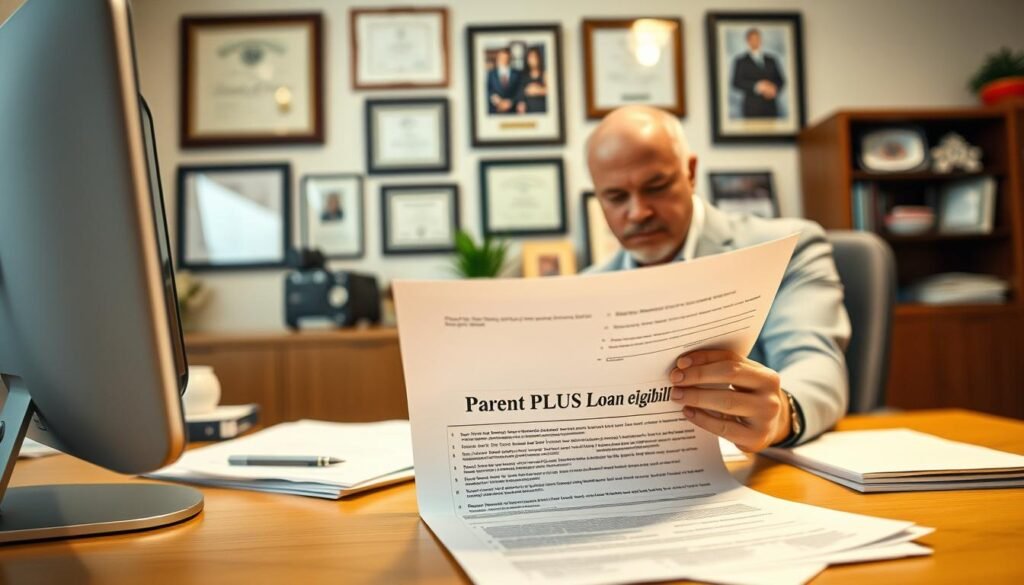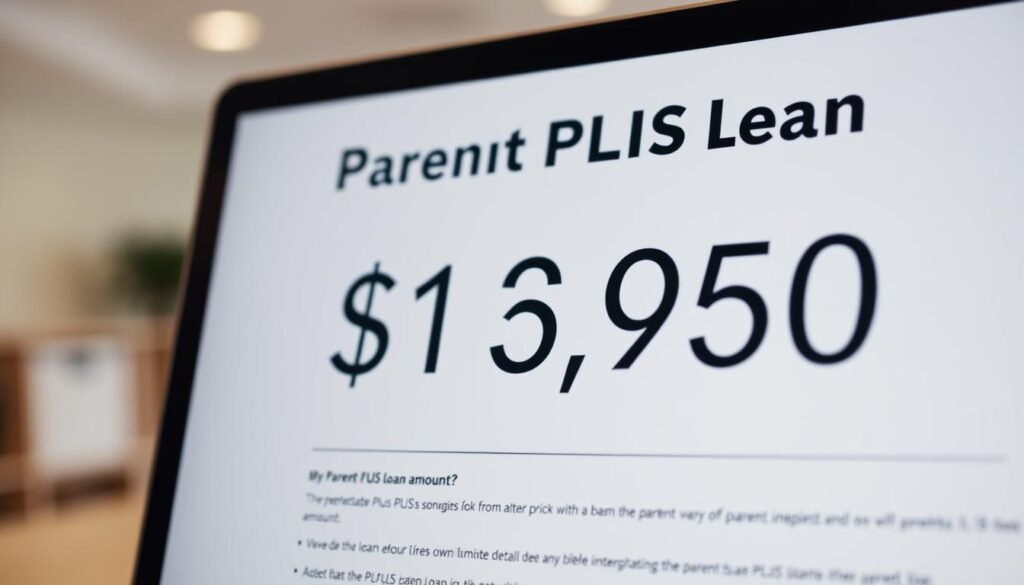Parents of dependent undergraduate students often face significant financial challenges when it comes to funding their child’s education. Federal student loans can provide a vital source of support, and one option available is the Parent PLUS loan.
These loans, also known as Direct PLUS Loans, are designed specifically for parents who need additional funding beyond scholarships, grants, and other forms of federal student aid. Unlike other federal student loans, Parent PLUS loans are taken out in the parent’s name, making them solely responsible for repayment.
Understanding the benefits and limitations of Parent PLUS loans is crucial for making informed decisions about financing your child’s education. Recent changes to PLUS loan eligibility and borrowing limits may also impact your options.
Key Takeaways
- Parent PLUS loans are federal loans for parents of dependent undergraduate students.
- These loans can cover up to the total cost of attendance minus other financial aid received.
- Parent PLUS loans differ from private student loans in terms of eligibility and repayment options.
- Parents are solely responsible for repaying these loans.
- Recent changes to PLUS loan eligibility may affect borrowing options.
What Is a Parent PLUS Loan?
Understanding Parent PLUS loans is crucial for parents who want to support their child’s academic pursuits. These loans are designed to help bridge the financial gap for families, enabling them to cover the costs associated with higher education.
Definition and Purpose
A Parent PLUS loan is a type of federal student loan that parents can borrow to help pay for their child’s education expenses. The primary purpose of these loans is to provide financial assistance to families, allowing them to cover costs such as tuition, room, and board. As U.S. Department of Education states, “PLUS loans help pay for education expenses up to the cost of attendance minus any other financial aid.”
How Parent PLUS Loans Differ from Other Federal Loans
One key difference between Parent PLUS loans and other federal student loans is the requirement for a credit check. Unlike Direct Subsidized and Unsubsidized loans, Parent PLUS loans involve a credit check to assess the borrower’s credit history. Additionally, Parent PLUS loans typically have higher interest rates compared to other federal student loans. Here are some key differences:
- Credit check requirement
- Higher interest rates
- Different eligibility criteria focusing on the parent’s credit history
- Higher borrowing limits
It’s essential for parents to understand these differences to make informed decisions about their financial aid options.
Eligibility Requirements for Parent PLUS Loans

Understanding the eligibility requirements for Parent PLUS Loans is crucial for parents seeking financial aid for their child’s education. Both the parent borrower and the student must meet specific criteria to qualify.
Parent Eligibility Criteria
The parent borrower must be a biological or adoptive parent of the student or, in some cases, a stepparent. The parent must be a U.S. citizen or an eligible non-citizen. A credit check is required, and the parent must not have an adverse credit history. If the parent has a credit issue, they may still qualify by obtaining an endorser or by documenting extenuating circumstances.
Student Eligibility Criteria
The student must be enrolled or accepted for enrollment at least half-time in a degree or certificate program at an eligible school. They must be classified as a dependent undergraduate for federal financial aid purposes, as determined by the FAFSA application. The student must maintain satisfactory academic progress and have a completed and valid FAFSA on file for the relevant academic year.
| Student Eligibility Criteria | Description |
|---|---|
| Enrollment Status | Enrolled or accepted for enrollment at least half-time |
| Dependency Status | Dependent undergraduate student as per FAFSA |
| FAFSA Requirement | Completed and valid FAFSA for the academic year |
The Application Process

Applying for a Parent PLUS Loan involves several key steps that parents must complete to secure funding for their child’s education. The process is designed to be straightforward, ensuring that parents can easily access the funds they need.
Step 1: Complete the FAFSA
The first step in applying for a Parent PLUS Loan is to complete the Free Application for Federal Student Aid (FAFSA). This is a crucial step as it determines the student’s eligibility for federal, state, and institutional financial aid. Parents should ensure that they include their financial information on the FAFSA, as this will be used to assess their eligibility for the PLUS Loan.
Step 2: Apply Online for the PLUS Loan
After completing the FAFSA, parents need to apply online for the PLUS Loan through the studentaid.gov website. This involves logging in with their Federal Student Aid (FSA) ID and providing the required information about the student and the loan amount needed. The application process includes a credit check, which is used to determine the parent’s creditworthiness.
Step 3: Complete the Master Promissory Note
Once the PLUS Loan is approved, parents must complete a Master Promissory Note (MPN), a legal document that outlines their agreement to repay the loan. The MPN includes details about the loan’s terms and conditions, such as interest rates, fees, and repayment obligations. Parents can complete the MPN online using their FSA ID to electronically sign the document. The MPN is generally valid for 10 years, allowing parents to receive multiple PLUS loans for the same student without signing a new MPN each time.
It’s essential to note that the loan cannot be disbursed until the MPN is completed. Parents should contact their school’s financial aid office if they have any questions about the application or signing process.
Interest Rates, Fees, and Loan Limits

Understanding the financial aspects of Parent PLUS Loans is crucial for parents considering this option for their child’s education. Parent PLUS Loans have specific financial terms that can significantly impact the overall cost of borrowing.
Current Interest Rates
The current interest rates for Parent PLUS Loans are an important consideration. As of the latest available data, the interest rate is fixed, providing predictability for repayment. Parents should check the latest rates on the official government website or consult with their loan servicer.
Loan Fees and Disbursement
In addition to interest rates, Parent PLUS Loans come with origination fees, which are deducted from the loan amount before disbursement. The loan funds are typically disbursed directly to the educational institution, with any remaining balance refunded to the parent after tuition and fees are paid.
Borrowing Limits and Upcoming Changes
Currently, parents can borrow up to the full cost of attendance minus any other financial aid the student receives. However, significant changes are set to take effect on July 1, 2026, introducing new borrowing limits, including an annual limit of $20,000 per child and a lifetime limit of $65,000 per student. These changes aim to prevent excessive borrowing and reduce the burden of student loan debt on families.
Credit Requirements and Options If Denied

To secure a Parent PLUS Loan, parents must satisfy the credit requirements set by the U.S. Department of Education. A critical aspect of this process is the credit check, which assesses the parent’s creditworthiness.
Credit Check Criteria
The credit check criteria involve evaluating the parent’s credit history for any adverse credit conditions. This includes checking for delinquencies, defaults, or bankruptcies within a certain period.
- A credit check is performed to assess the risk of lending.
- Parents with adverse credit history may be denied.
Adding an Endorser
If a parent is denied due to adverse credit, one option is to add an endorser who does not have adverse credit history. The endorser must meet specific credit criteria.
Documenting Extenuating Circumstances
Parents can also appeal a denial by documenting extenuating circumstances that led to their adverse credit. This involves submitting evidence to the U.S. Department of Education’s loan servicer.
- Medical emergencies or natural disasters can be considered extenuating circumstances.
- Documentation, such as medical bills or insurance claims, must be provided.
- If approved, parents must complete counseling before loan disbursement.
Understanding these options can help parents navigate the challenges of credit requirements for Parent PLUS Loans. By either adding an endorser or documenting extenuating circumstances, parents can still secure the necessary funding for their child’s education.
Repayment Options for Parent PLUS Loans

Parents who have taken out Parent PLUS Loans need to be aware of the various repayment plans and forgiveness possibilities available to them. Repayment begins shortly after the loan is fully disbursed.
When Repayment Begins
Typically, repayment for Parent PLUS Loans starts within 60 days after the final disbursement. However, parents can request a deferment while the student is enrolled at least half-time.
Available Repayment Plans
Several repayment plans are available, including fixed and graduated repayment plans. Income-contingent repayment plans are available through consolidation.
Loan Forgiveness Possibilities
Loan forgiveness options are limited for Parent PLUS Loans, but Public Service Loan Forgiveness (PSLF) may be an option for parents working in qualifying public service jobs after consolidating their loans.
- Parents may be eligible for PSLF if they make 120 qualifying payments while working full-time for an eligible employer.
- Parent PLUS Loans may be discharged due to permanent disability or death.
- School-related discharges are also possible under certain conditions.
Conclusion: Is a Parent PLUS Loan Right for Your Family?
Parents seeking to support their child’s educational endeavors may find a Parent PLUS Loan to be a valuable resource. Before making a decision, it’s essential to explore all available financial aid options, including scholarships, grants, and federal student loans.
When evaluating a Parent PLUS Loan, consider your ability to repay the loan, your long-term financial goals, and the potential impact on your retirement planning. Compare the loan’s interest rates and terms with other available loan options.
Ultimately, a Parent PLUS Loan can be a helpful tool for families needing additional funding for college expenses. By carefully weighing your financial options and considering the upcoming changes to Parent PLUS loan eligibility, you can make an informed decision that’s right for your family.






